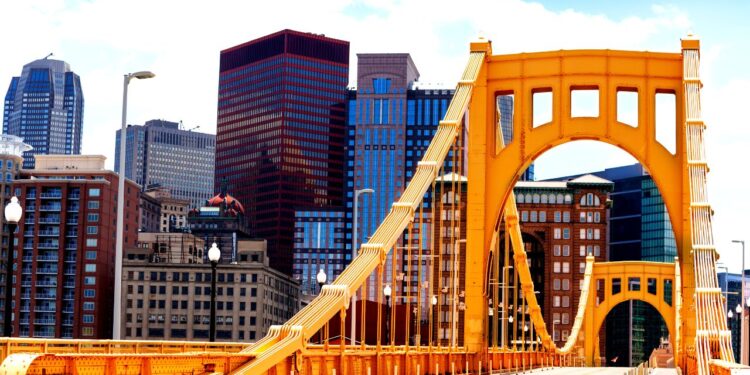Like other commercial real estate markets across the U.S., downtown Pittsburgh’s office market faces dramatic looming challenges related to office occupancy.
According to a report published by the Pittsburgh Post Gazette, nearly 50% of the office spaces downtown could be sitting empty by 2028. The report reveals that over two dozen buildings are at risk of foreclosure — further compounding the economic challenges faced by the city.
The rise of remote work, evolving corporate space requirements, and an oversupply of office spaces are reported to be among the key factors contributing to this downturn. As businesses adapt to the changing demands of professionals in the workforce, the demand for traditional office spaces has declined significantly — leaving downtown Pittsburgh with a supply of vacant properties. According to Pittsburgh Post Gazette, confidential real estate information/data marks the current office vacancy rate at 27% when subleases are factored into the equation.
The report suggests an urgent need for intervention from local authorities and stakeholders to develop new strategies that can attract businesses, promote spaces, and breathe new life into the downtown area. This has led Pittsburgh City Councilman Bobby Wilson to draft legislation that would remove $250,000 limit on the amount of tax relief available to a building owner or developer if a project can create at least 50 full-time equivalent jobs.
As the future of work continues to be influenced by flexible work opportunities, downtown Pittsburgh will likely need to reimagine its commercial real estate sector to adapt to these changing trends. Failure to act swiftly and decisively could result in a prolonged period of economic stagnation and urban decay, making it imperative for the city to find innovative solutions to this pressing issue.


 Dr. Gleb Tsipursky – The Office Whisperer
Dr. Gleb Tsipursky – The Office Whisperer Nirit Cohen – WorkFutures
Nirit Cohen – WorkFutures Angela Howard – Culture Expert
Angela Howard – Culture Expert Drew Jones – Design & Innovation
Drew Jones – Design & Innovation Jonathan Price – CRE & Flex Expert
Jonathan Price – CRE & Flex Expert











